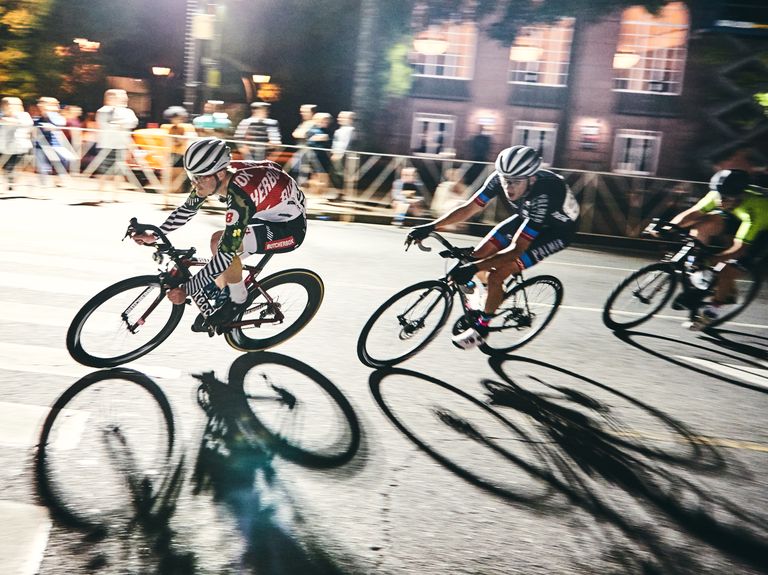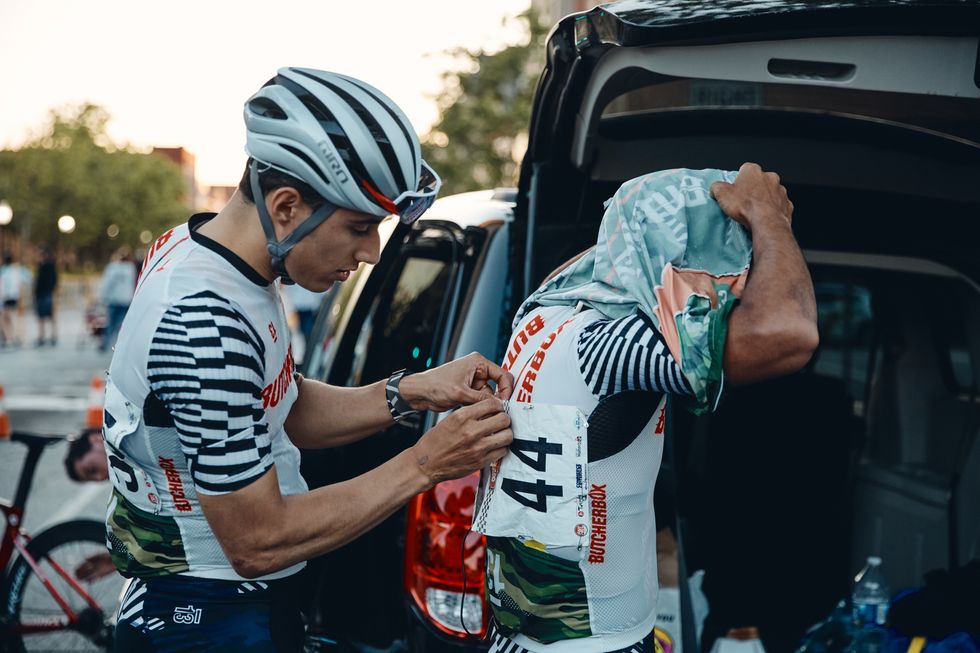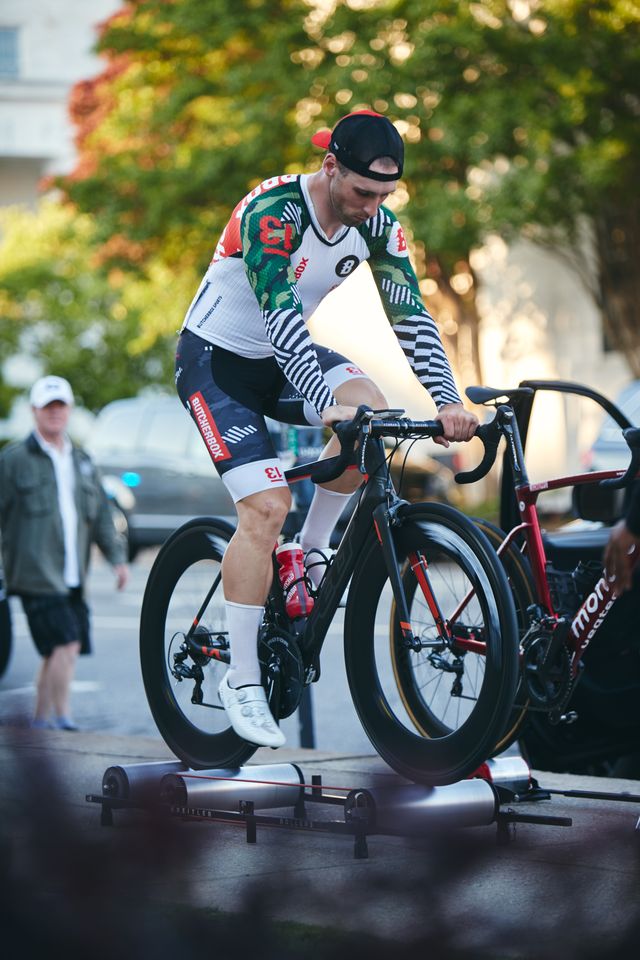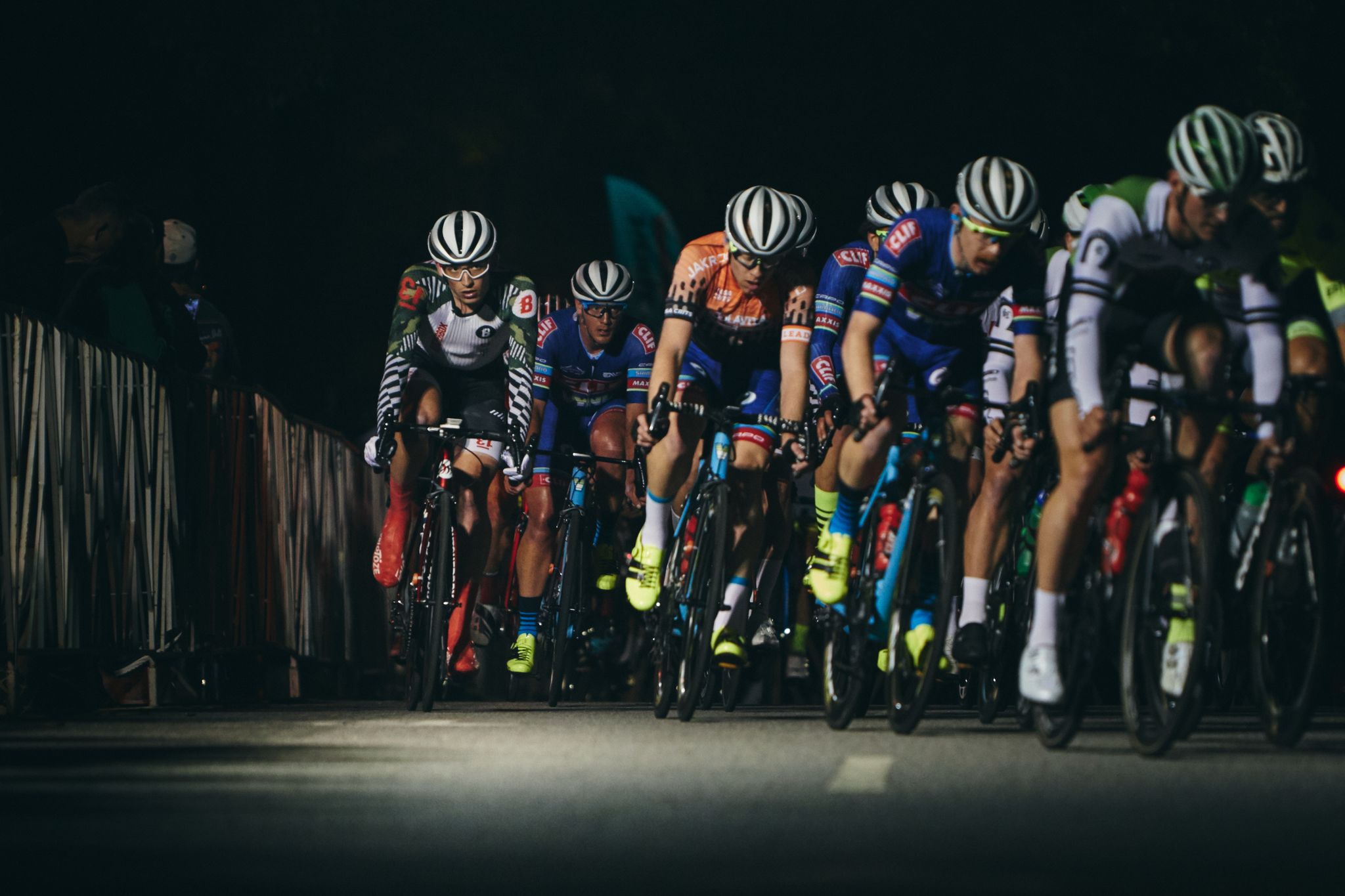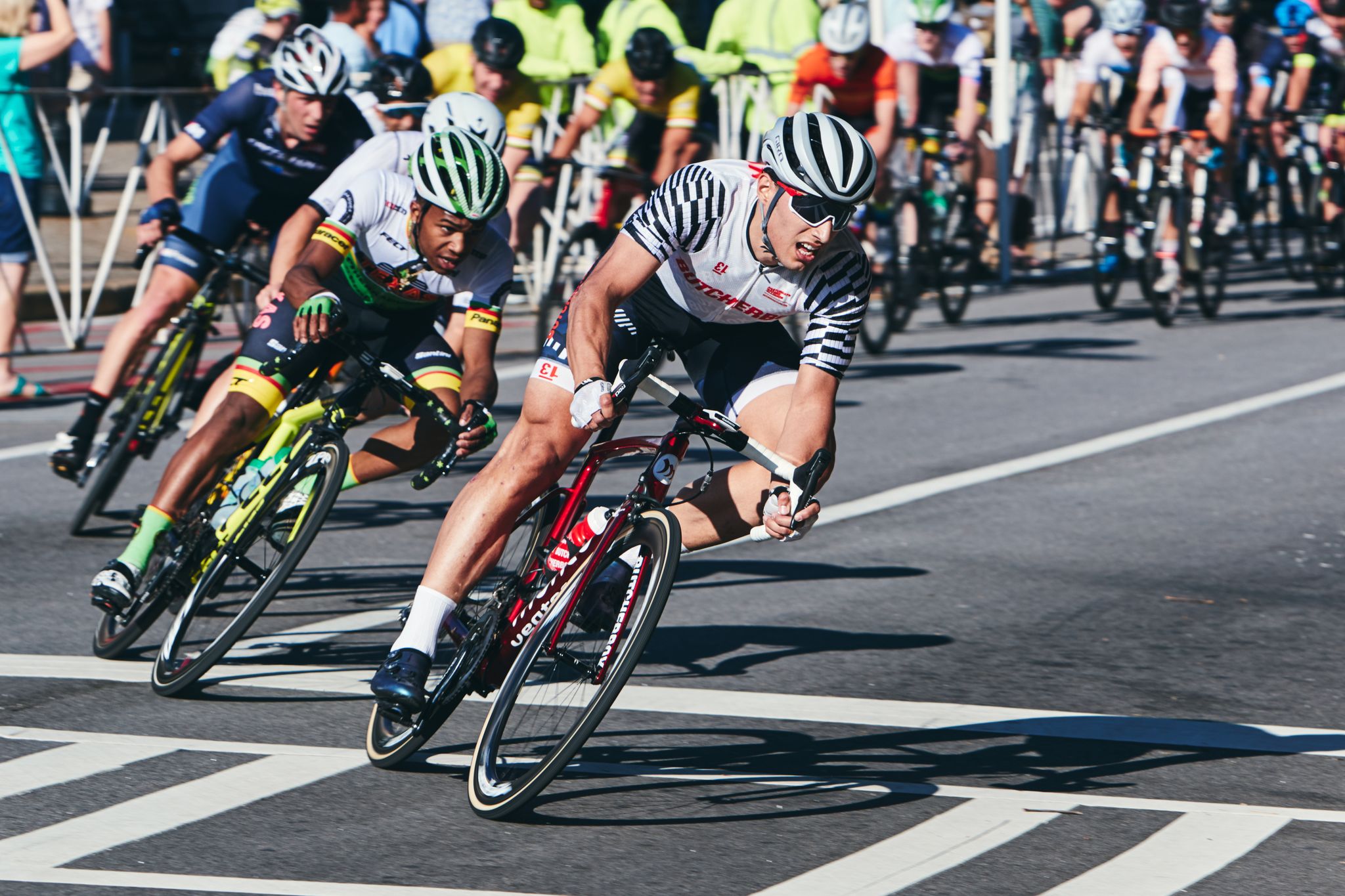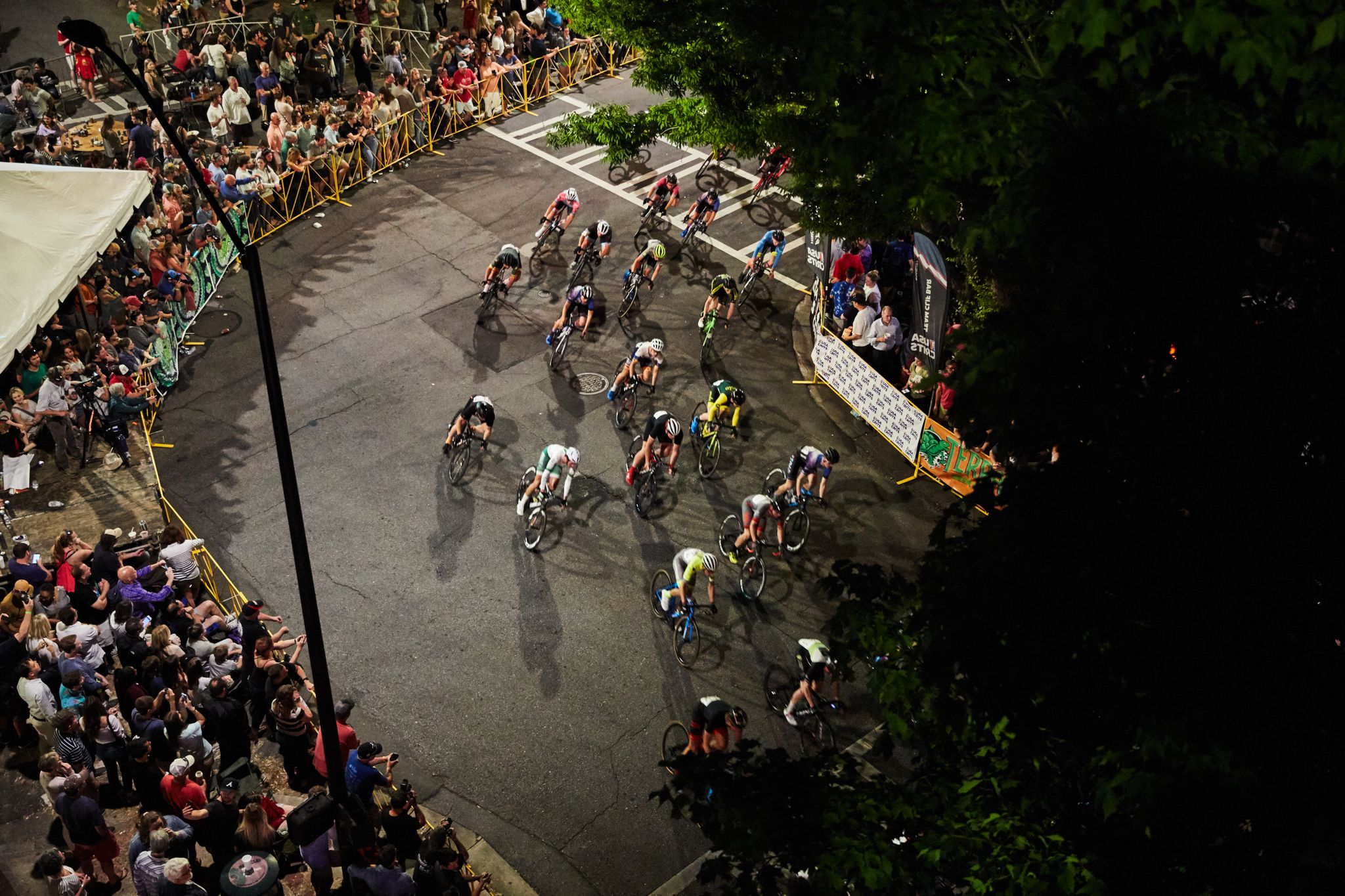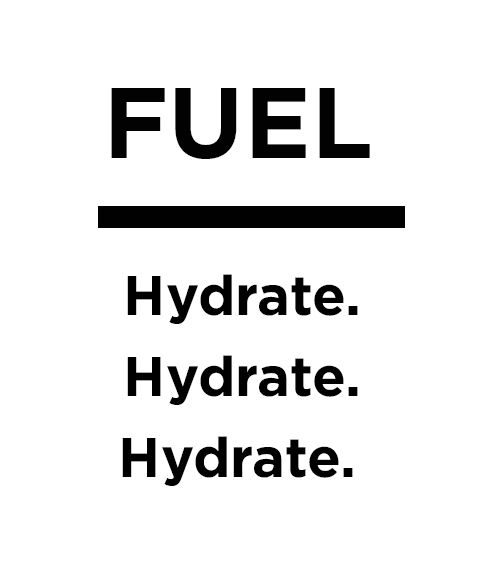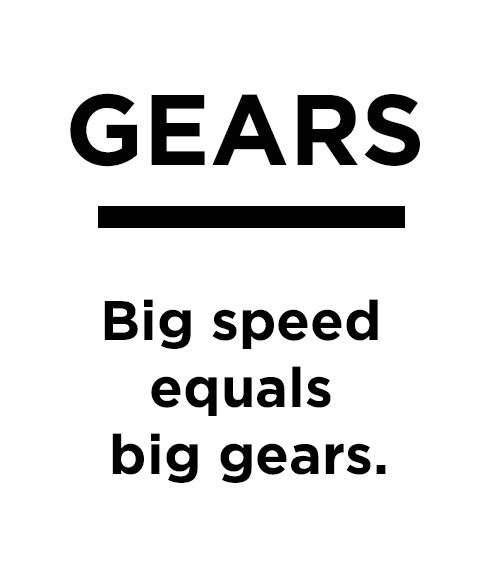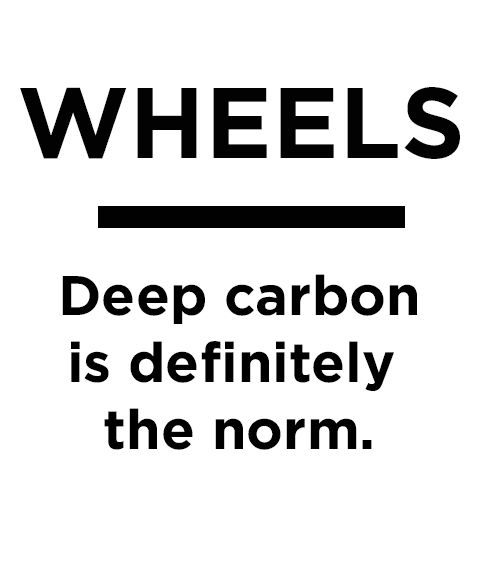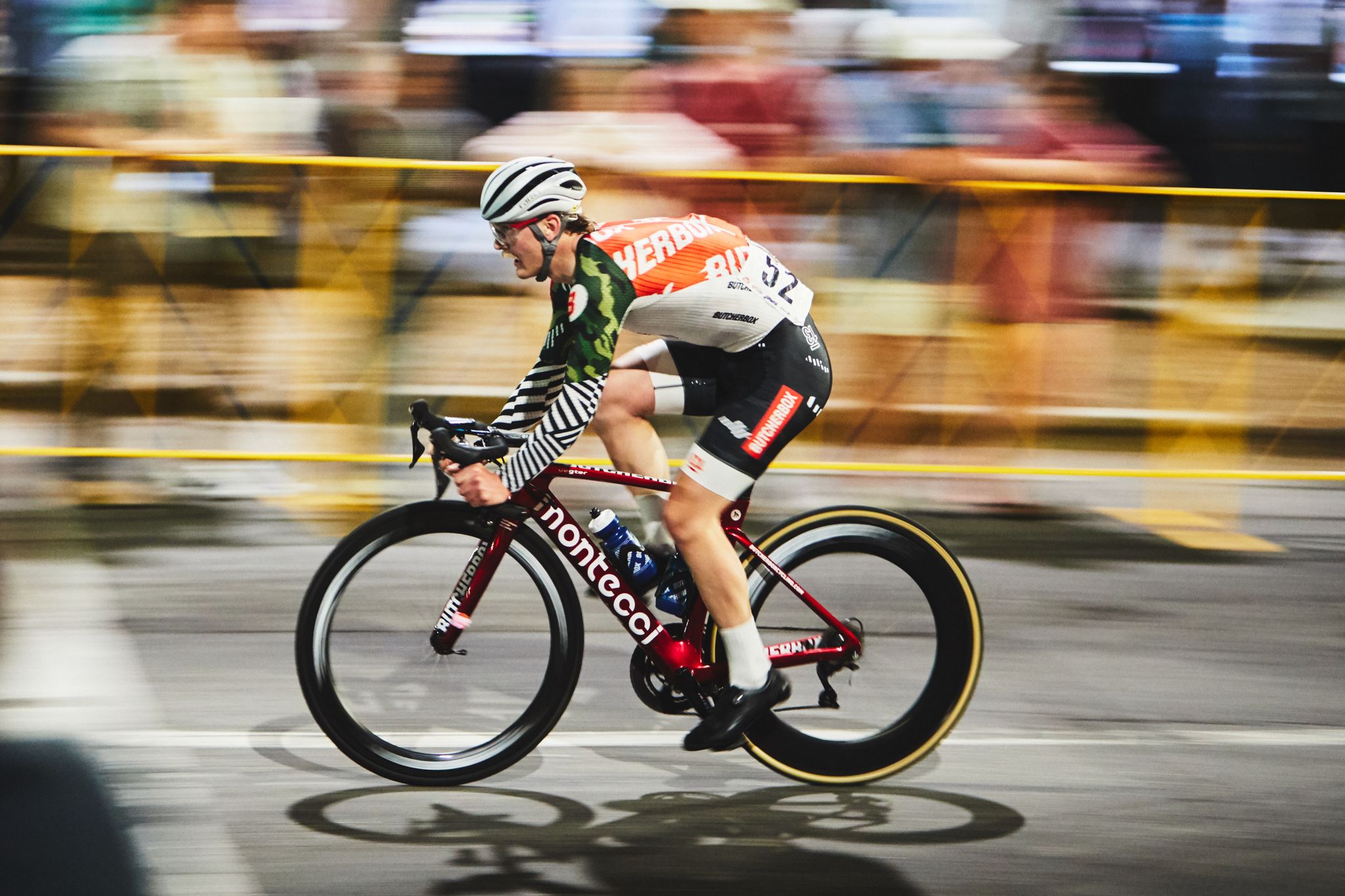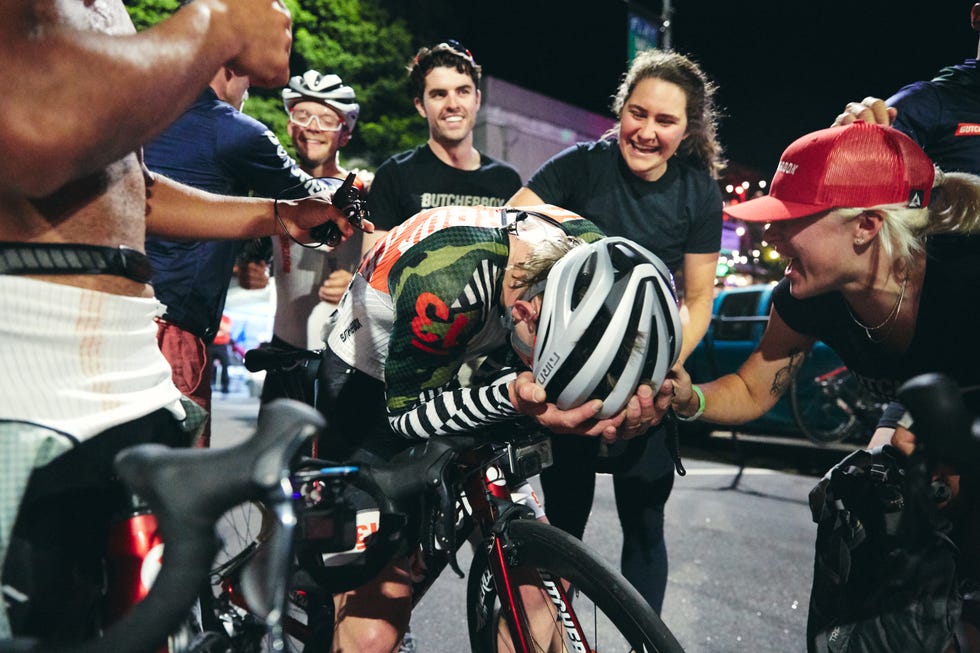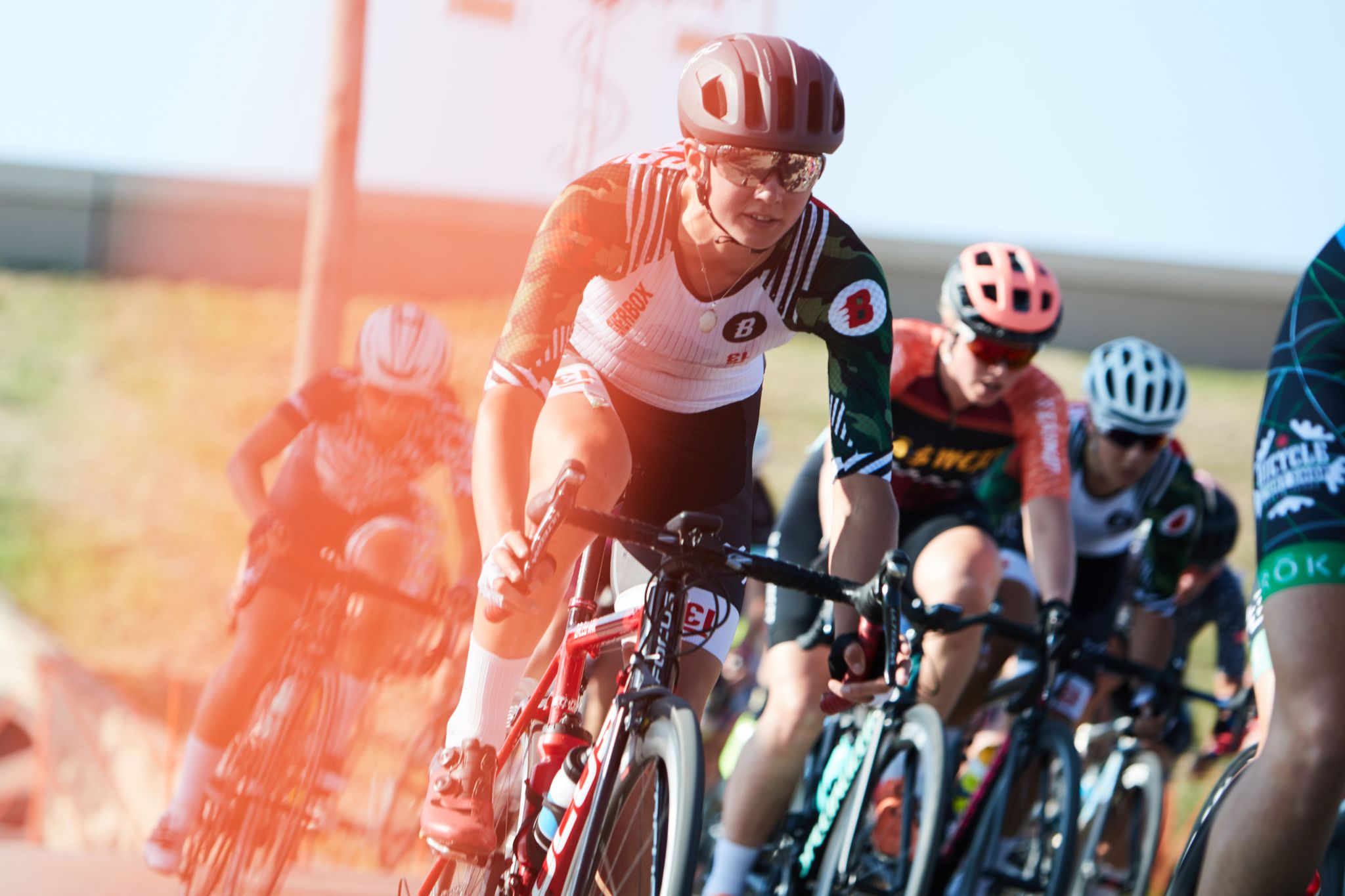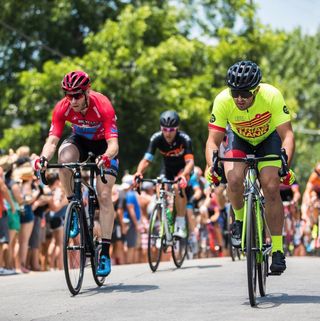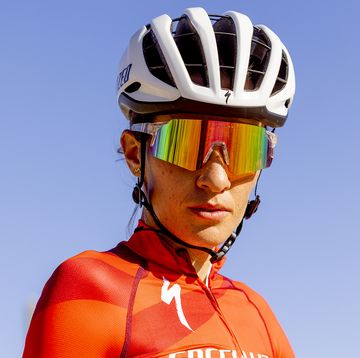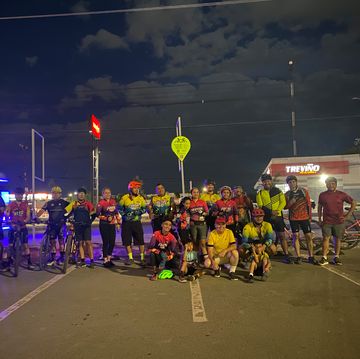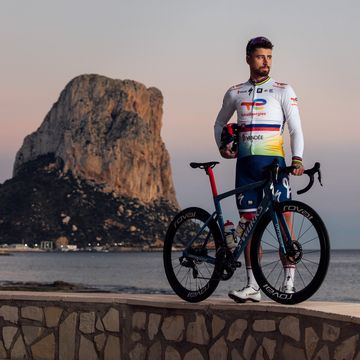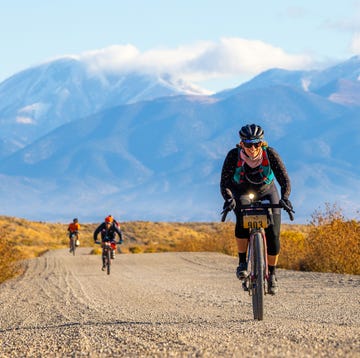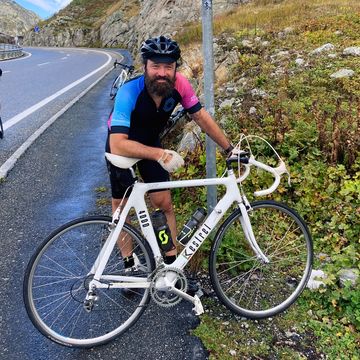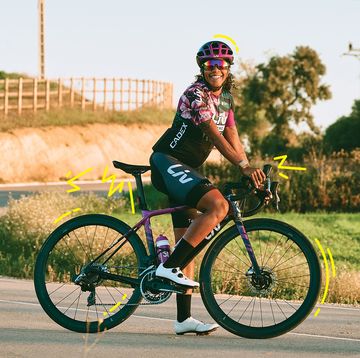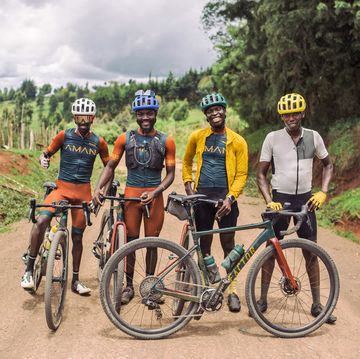To help kickstart summer racing, Steve M. Cullen, ButcherBox Cycling team director, sports writer, and the voice behind the Fasturdays podcast, shares everything you need to know about Criteriums, America’s most popular race style. To help illustrate, Patrick Daly, a sports and adventure photographer, provides images from the 2019 Athens Twilight Criterium, considered the biggest single day race in the U.S.
Criteriums, also known as “crits,” are changing race culture for the better. Instead of slogging up remote mountains, crits speed through downtown streets like getaway cars, taking tight turns at 30mph with fields of hundred racers or more. The biggest events are late at night, under stadium lights enveloped by spectators with raucous MCs and light shows. The experience is delightfully manic.
February through October, across the country, every weekend, there are crits. If your usual group rides are getting boringly slow, and you thought Talladega Nights was a how-to video, racing crits might be the answer. And you don’t have to be a pro to try one.
- Related Story: From the Experts: How to Race a Crit, by Tom Gibbons
Center of the Crit Universe
America sets the gold standard in race quality, creativity, and sheer volume of races. Maybe it’s our attention spans? However, we’re not totally alone.
The United Kingdom, Australia, Germany, and the Netherlands have full-blown professional criterium series. In fact, there are over 25 different countries with criterium national championships, though sadly, it is not yet an Olympic event. Even our women's program has two Australians and a guest rider from the United Kingdom.
“Everyone comes here to race, especially the Aussies and Germans,” explains Butcherbox Cycling pro-rider and winner of America's oldest bike race, Connor Sallee. “Lots of accents at the start line midsummer.”
Butcherbox Cycling, a team concentrating on American-style crits and cyclocross events with elite and club squads for both men and women, lives at the heart of this bike scene, and we want you to get in on the thrill with us.
[Find 52 weeks of tips and motivation, with space to fill in your mileage and favorite routes, with the Bicycling Training Journal.]
Everything You Need to Know About Crits
A criterium is a lapped race on a closed circuit set in cities. Laps are usually a half-mile to 1.5 miles long, typically with 4-6 turns. Total race distance is usually 15 miles (beginner) to 60 miles (professional); approximately 25 minutes to 1 hour 55 minutes. Short and spicy.
At the end, first rider/team across the line wins. Top finishers get prizes. Don’t worry, races are graded from beginner (Category 5) to professional (Category 1), so you’re equally matched. Like a video game, each level gets faster and longer as you progress.
The roller coaster feeling of zipping through turns in a pack is addictive, but the best part of racing is the atmosphere. You’ll find food trucks, beer gardens, family-friendly lawns and viewing areas, and music at most events. Compact courses make for easy viewing of the whole race, and there’s always someone willing to dog-watch while you rip a few laps.
Unlike a road race in the middle of nowhere, where slower riders are left out by themselves, every crit rider can keep going as long as the race is running. Plus, events are often staged in accessible neighborhoods (civilization!) with postrace chow spots.
The Defining Crit Characteristic: Lots of Turns
The single defining aspect of a crit is a lot of turns. Go to a parking lot and make a mini-course with left and right 90-degree turns. Work into them faster and faster, building comfort. Our Athen’s Twilight podium finisher, John Harris has these pointers:
“Hands in the drops, it’ll give your more control. Next, lift the inside foot, and press down on the outside foot, that gives the tires traction. Coast into the turn and pick your line through it, starting wide, and then diving into the corner. If you must, trim your speed before the turn, not in the middle of it, where braking might cause a skid or worse. While turning, look out of the turn, your bike follows your eyes... I also make a little ‘zoom’ sound in my head. It helps.”
Find a Crit
Get started in two places: midweek training crits and weekend races. The bedrock of the racing community is the midweek training crit, typically postwork Tuesday through Thursday. Most are free, and veteran racers happily share pointers. Don’t be intimidated. Just ask.
When you’re ready for the real thing, explore BikeReg.com and USACycling.com. Each state has its own governing cycling organization, which typically hosts a regional race calendar.
Crits are so plentiful that an open search of “training crit series my state” and “criterium in my state” always works. Training crits often combine men’s and women’s fields. “I train and ride with men all the time even though we race separately,” notes Butcherbox pro-rider, Leslie Timms. She adds, “The sport evolved in the last few years. Women’s only fast rides are getting common and the women’s crit culture is pretty strong here.”
On that next group ride, find the cyclist with sharp tans lines, veins on the tops of their thighs, and a full matching team kit. They’ll know.
Criteriums to Put on Your Bucket List
Here are three top crits to add to your to do list. Grab a friend, pack your bike, hit the highway. Road tripping to races is a time-honored summer tradition in America. Like surfers chasing the best breaks, crit races zig-zag the country hunting for interesting courses and the most rowdy events.
Athens Twilight
Founded by Gene Dixon, this is America’s first night race. This Super Bowl of crits, which is in its 40th year, takes place in Athens, Georgia. It’s a race so crazy it literally caught fire one year. World champions, Tour de France winners, and every fast cyclist in the world has taken a shot at winning this thing. Race in the a.m., then party with 35,000 fans watching the pros at night. Pack Advil, and book a late flight out.
Saint Francis Tulsa Tough
Also known as the three craziest days of bike racing in America. All of Tulsa, Oklahoma, shuts down to unleash a 72-hour block party with costumes, music, and more Michelob Ultra sprayed into the air than scientifically conceivable. Racing apexes on day three with the infamous River Park course, featuring the 16-percent-grade Cry Baby Hill, where fans scream for racers holding sticks adorned with babydoll heads. Cry Baby Hill has its own Facebook page to manage the party madness leading up to the race. Word of caution: One cannot un-see what happens there.
Tour of America’s Dairyland
The ultimate challenge, held across Wisconsin, is nearly two continuous weeks of back-to-back crit racing on a different course every day. Founded by Otto Wenz as an alternate to the Tour de France, “TOAD” is the largest competitive road cycling series in the U.S. The last Saturday features the Downer Ave course with an outrageously-anticipated midrace prize sprint. Brace thy self.
For a little extra motivation, watch the Butcherbox Team on USACrits.tv at the upcoming Tulsa Tough three-day race, June 7-10. Stop by, say hi. Ask for tips. We’ll be glad to help. We’re friends-in-faster now.
